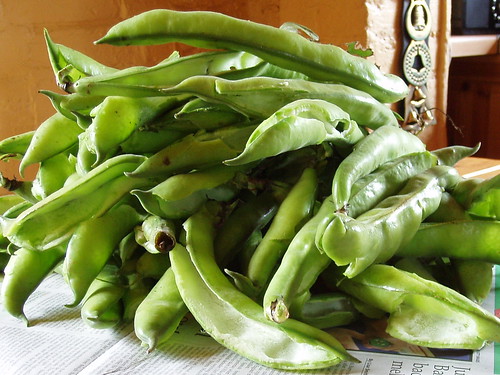Intercropping is one of the most interesting modern trends in gardening – it is the cultivation of many kinds of plants on one big expanse, influencing vermin or upgrading some plant species by their proximity.
The most important ways of mixing plants are:
- Grouping slow-growing plants with the fast-growing ones
- Putting together plants with shallow roots with others that extract from deeper layers of soil
- Sharing of the space by plants of different heights
- Natural pest control achieved by carefully selecting neighbouring plants
- Fertilizing and strengthening the properties of one kind of plants by well planned neighbouring ones.

One of the biggest perks of intercropping is space-saving. It is especially convenient in small gardens, where it enables much better crops and adds some extra space for even more plants. It is almost as if the planting space was multiplied by two.
Neutralizing the danger of land impoverishment is another plus of this method – planting different species of plants together makes the distribution of minerals in the soil more even and diverse, as various species require them in different amounts. In a limited way, the garden starts to resemble a natural meadow, where many organisms co-exist and the soil is self-regenerating. Although it is not quite the same with intercropping, since the gardener has to fertilize his small field to gain rich crops, the situation resembles the natural state than demarcating straight, neat beds.
The best neighbors in intercropping are:
- Spinach – lettuce, carrot, strawberry, cabbage, radish, kohlrabi;
- Bean – potato, carrot, cabbage, cucumber;
- Lettuce – radish, carrot, onion, garlic, strawberry, cucumber, spinach;
- Radish – carrot, spinach, lettuce, parsley, chive, cabbage, bean;
- Carrot – lettuce, pea, radish, leek, fennel, garlic, onion, tomato;
- Onion – carrot (pest protection), leek, radish, celery, beet, strawberry, fennel, parsley;
- Garlic – carrot, cucumber, tomato, strawberry and flowers such as lilies, roses and tulips (pest protection)
- Pea – carrot, chicory, fennel, lettuce, cucumber, kohlrabi;
- Broad bean – carrot, chicory, fennel, lettuce, cucumber, kohlrabi;
- Strawberry – garlic, onion, spinach, lettuce;
- Corn – potato, pea, bean, cucumber, pumpkin, cucurbit, wheat;
- Cucumber – bean, corn, pea, radish, sunflower, broad bean, garlic, lettuce;
- Potato – bean, corn, cabbage, horseradish, flax.

You should not put together:
- Bean – onion, common garlic, gladiolus;
- Potato – pumpkin, cucurbit, cucumber, sunflower, tomato, corn-poppy, white pigweed;
- Beet – bean, white mustard;
- Carrot – fennel;
- Cabbage – strawberry, tomato, bean;
- Cucumber – potato, fragrant herbs.
While planning this year’s sowing and planting in vegetable gardens, it is good to consider how to match advantageous plants together. Practical aspect aside, the garden presents itself as much more charming when instead of big blocks of one species planted on adjoining beds we can see an intertwining pattern of many plants growing on neighboring beds or in a straight row. Now, before the beginning of the season, you can still plan bringing this improvement to life, as later on it might become logistically impossible. It is time to try out the advantages of intercropping!
Article source: Intercropping - your path to success in the garden
![Reblog this post [with Zemanta]](http://img.zemanta.com/reblog_e.png?x-id=42dcc9c1-af28-48e4-a83c-c21363e70719)
No comments:
Post a Comment